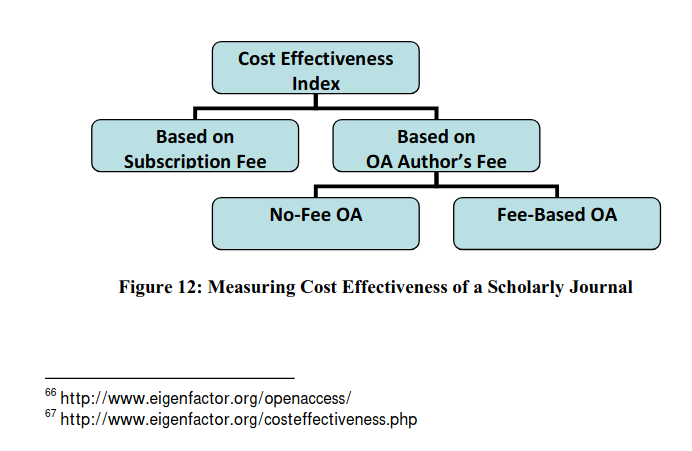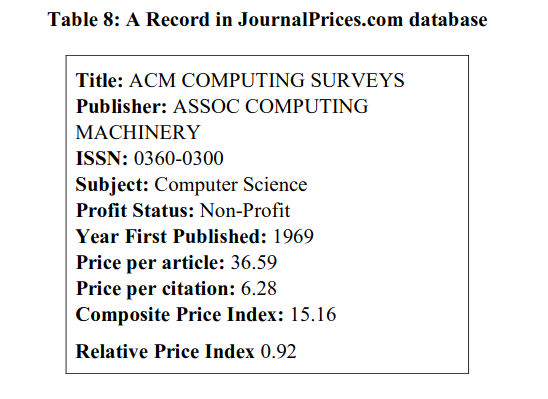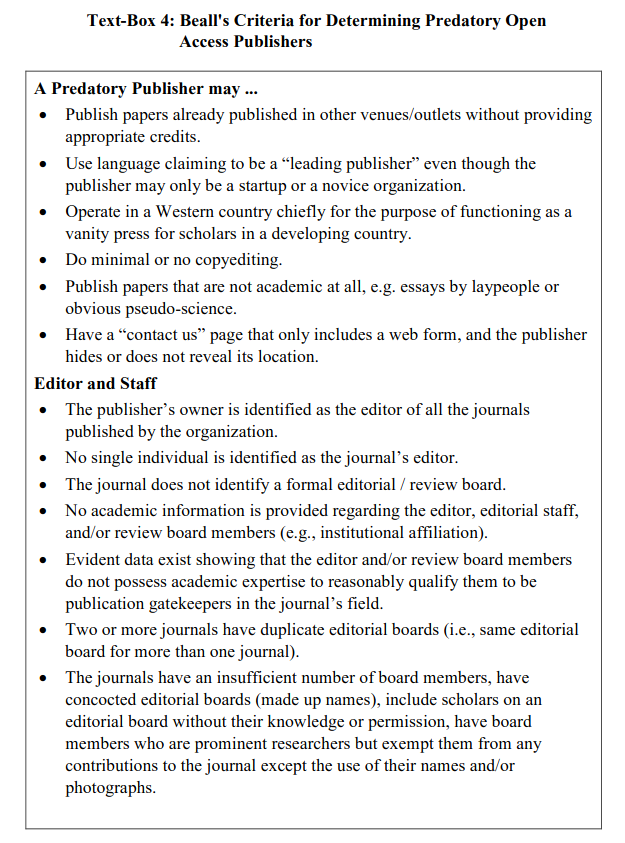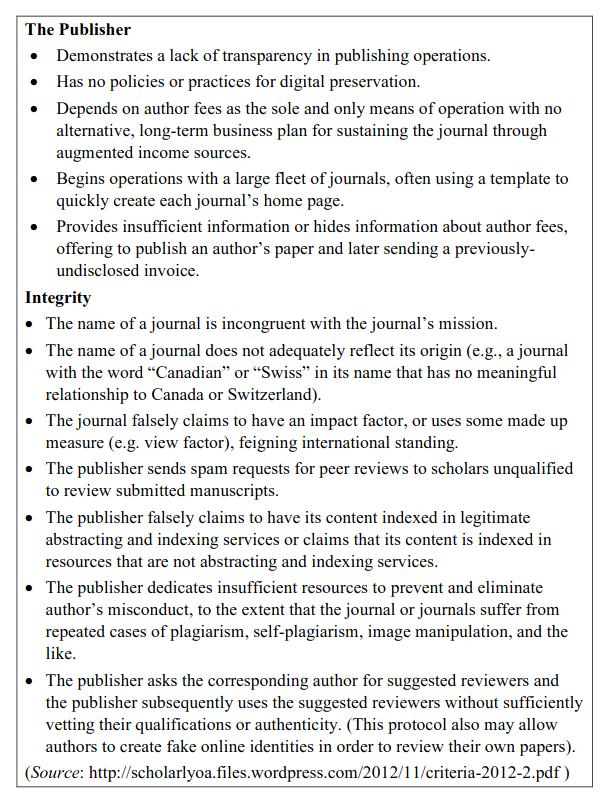4.4 Pricing and Economics of Journal Publishing
Publishing scholarly journals is a commercial affair of publishers that involves costs in pre- production, production and distribution processes. Some of the costs are recovered from the annual subscriptions, online subscription, sales of online articles, article processing charges (APC) or publishing fees, as well as from some advertisements in journal issues or journal websites. Since the beginning of academic publishing many non-profit societies are involved in journal publishing. They receive membership fee from the members. This membership fee usually includes annual subscription to the society’s journal or proceedings. Since long for-profit publishers have stepped in publishing academic journals, either independently or jointly with non-profit societies or institutions. For-profit publishers obviously make profit by selling annual subscriptions to subscribers and sales of journal contents. They also have many other avenues of generation of revenues, such as selling rights of translation or republishing to online academic databases and reuse of contents, both current and retrospectively by other publishers. Their co-publishing venture with non-profit societies is a win-win situation for both the parties – publishers get ready to publish journal contents and societies receive a share from journals’ sales revenue. Without getting into the hassles of printing, distributing and collecting subscription – all these are expensive and time taking processes. Figure 11 gives a schematic view of academic journal publishing. This Figure also indicates that non-profit publishers are sometimes fully dependent on journal-based revenues for providing cross subsidy to their research, training and other professional activities. On the other hand, a few non-profit publishers generate revenues from membership fees and other dues from their members. They are ready to provide cross subsidy to journals, and even launching open access journals for the benefits of communities all over the world in their respective subject areas. Many public-funded research institutions and universities are also involved in journal publishing. They also have budgetary support to publish journals in their core areas of research. They also provide cross subsidy to journals from their research programmes and help in launching open access journals for the benefits of communities in their respective subject areas. The serials crisis started at the global level with unaffordable hike of subscription fee by some for-profit publishers and scholarly societies, who are fully dependent on journal-based revenues. Their whole motive is to generate high margins of profit from their journal publishing business.
4.4.1 Cost Effectiveness of Journals
The eigenFACTOR.org website provides a unique indicator for measuring pricing of scientific journals – the journals which are indexed in the Web of Science (WoS) and its by-product Journal Citation Reports (JCR) on Web. This indicator is named as Cost Effectiveness (CE) Index. This index indicates prestige of a journal vis-à-vis its affordability by the scientific community. Highly popular journals based on a journal's Article Influence® score having relatively low subscription fee or author’s fee are considered as top-rated. This index has two tracks, namely CE based on subscription fee and CE based on fee paid by the authors. Here the subscription fee refers to cost of institutional subscription to print or online edition of a journal. The author’s fee refers to average article processing charge for publishing an OA article in OA journals. Cost Effectiveness66 for open access journals is searchable by subject field, name of publisher, and journal title. Cost Effectiveness67 for subscription-based journals is searchable by Eigenfactor category, ISI category, name of publisher, and journal title. Figure 12 depicts schematic view of measuring cost effectiveness of a scholarly journal using eigenFACTOR.org website. Similar to eigenFACTOR.org website, JournalPrices.com68 is a very useful website for researchers and librarians. It provides a comprehensive detail of every journal indexed in the Web of Science (WoS) database. This online database can be searched by journal title, name of publisher, ISSN and subject areas. Its informative journal pricing details include journal’s Profit Status, Price per Article, Price per Citation, Composite Price Index, and Relative Price Index. This website identifies three value categories of scholarly journals, viz., Good Value, Medium Value and Bad Value. A typical journal record looks like Table 8, searched by subject area Computer Science. Ted Bergstrom's Journal Pricing Page (Econ.ucsb.edu/~tedb/Journals/jpricing.html) provides additional inputs on economics of journal publishing.


4.4.2 Problems with Predatory Open Access Journals
The “Predatory Open Access” is a new concept and term conceived and coined by University of Colorado Denver librarian and researcher Jeffrey Beall. He maintains a regularly-updated online report named “Beall's List”69 of potential, possible, or probable predatory scholarly open-access publishers. This is a list of questionable, scholarly open-access publishers, operating around the world and seeking manuscripts from prospective authors for publishing in their respective journals. These journals charge a publishing fee or article processing fee from authors and promise to publish the paper ‘instantly’. Text Box 4 shows Beall's criteria for determining predatory open access publishers. Most of these predatory journals are not indexed by abstracting and indexing services or covered by citation databases. Most of these journals are not even listed in the Directory of Open Access Journals (DOAJ.org). John Bohannon (2013) in his paper titled “Who's Afraid of Peer Review?” reveals little or no scrutiny and peer reviewing in many open-access journals, which fraudulently claimed to be peer reviewed. This paper went viral in social media circles and got considerable attention of science writers, science bloggers and science administrators. Later in December 2013, five scholarly organizations – the Committee on Publication Ethics (COPE), Directory of Open Access Journals (DOAJ), Open Access Scholarly Publishers Association (OASPA), and World Association of Medical Editors (WAME) – have published a joint statement “Principles of Transparency and Best Practice in Scholarly Publishing” to be followed by their member publishers and OA journals. They have also introduced more stringent criteria of granting membership of OA publishers in these organizations and inclusion of OA journals in DOAJ.



